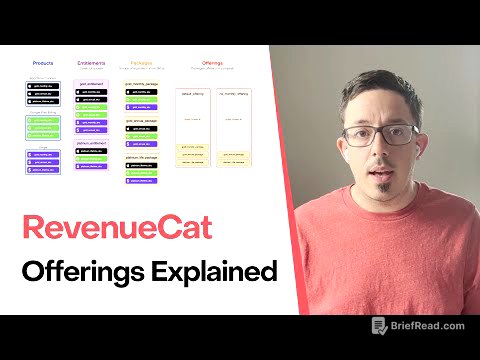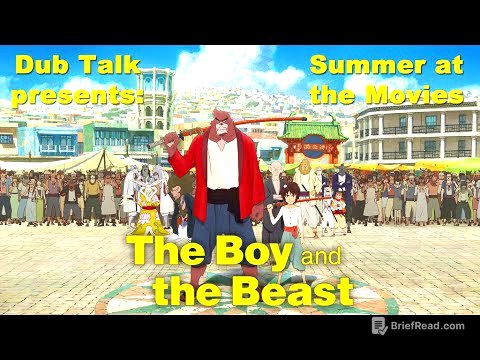TLDR;
This video provides a comprehensive overview of "Our Environment," a chapter from the class 10 science curriculum. It covers key concepts such as the definition of environment, ecosystem components (abiotic and biotic), types of ecosystems (natural and artificial), ecosystem functioning (food chains and food webs), energy flow (10% law), biomagnification, and environmental problems like ozone layer depletion and waste management.
- Environment consists of living and non-living components.
- Ecosystems are geographical areas with interacting organisms and environment.
- Energy flow follows the 10% law, with energy decreasing at each trophic level.
- Biomagnification increases toxin concentration at higher trophic levels.
- Ozone depletion and waste management are critical environmental problems.
Introduction to Our Environment [0:00]
The video introduces the chapter "Our Environment" from the class 10 science curriculum, emphasizing its importance despite being considered easy by students. The chapter covers fundamental concepts related to the environment and ecosystems, aiming to help students secure marks by understanding these concepts thoroughly. The video promises to explain the environment, ecosystem, their components, types, functions, energy flow, and environmental problems.
Defining Environment and Ecosystem [0:33]
The environment is defined as the total of everything around an organism, including both living (biotic) and non-living (abiotic) components. An ecosystem is a geographical area where living organisms interact with each other and their surrounding environment. The video highlights that ecosystems involve interactions between plants, animals, microorganisms, and their physical surroundings.
Components of the Ecosystem: Abiotic and Biotic [1:48]
The ecosystem is composed of two main types of components: abiotic and biotic. Abiotic components are the non-living parts of an ecosystem, such as soil, water, air, light, temperature, rainfall, and pH levels, which shape the environment. Biotic components are the living organisms, divided into three categories: producers, consumers, and decomposers.
Biotic Components: Producers, Consumers, and Decomposers [3:00]
Producers are organisms like green plants and some bacteria that can make their own food through photosynthesis and are also called autotrophs. Consumers depend on producers for food and are divided into herbivores (plant eaters like cows and goats), carnivores (meat eaters like tigers and polar bears), and omnivores (plant and animal eaters like humans and dogs). Decomposers, such as bacteria and fungi, are saprotrophic organisms that feed on dead and decayed matter, breaking them down into minerals that enrich the soil.
Types of Ecosystems: Natural and Artificial [5:54]
Ecosystems are classified into two types: natural and artificial. Natural ecosystems operate without human interference and are further divided into terrestrial (land-based) ecosystems like forests, mountains, and deserts, and aquatic (water-based) ecosystems like rivers, ponds, lakes, and seas. Artificial ecosystems, also known as man-made ecosystems, require human intervention to be created and maintained, such as crop fields, gardens, aquariums, and poultry farms.
Functioning of the Ecosystem: Food Chains and Food Webs [7:46]
The functioning of an ecosystem involves the interdependence of biotic and abiotic components. The food chain illustrates how energy is transferred from one organism to another through consumption. Trophic levels in a food chain include producers, primary consumers (herbivores), secondary consumers (carnivores), and tertiary consumers. A terrestrial food chain example includes plants, grasshoppers, mice, snakes, and eagles, while an aquatic food chain includes hydroplankton, zooplankton, small fish, big fish, and giant whales. Food webs are networks of interconnected food chains, showing the complex feeding relationships in an ecosystem.
Energy Flow in the Ecosystem: The 10% Law [11:41]
Energy flow in the ecosystem follows the 10% law, which states that only 10% of the energy entering a trophic level is available for transfer to the next level. For example, if plants have 50,000 Joules of energy, a grasshopper eating the plant will get 5,000 Joules, a snake eating the grasshopper will get 500 Joules, and an eagle eating the snake will get 50 Joules. This significant energy loss explains why food chains have limited trophic levels.
Biomagnification: Accumulation of Toxins [14:35]
Biomagnification is the increase in concentration of toxins and non-biodegradable substances in the body tissues of organisms as they move from one trophic level to the next. Non-biodegradable substances are not broken down by natural organisms and contribute to pollution. For example, toxins in a polluted pond can increase from 2 ppm in plants to 5 ppm in small fish, 200 ppm in larger fish, and 1600 ppm in humans who consume the fish. The highest concentration of toxins is found in the organisms at the highest trophic levels.
Environmental Problems: Ozone Layer Depletion [17:15]
The ozone layer, located in the stratosphere, protects the Earth from harmful ultraviolet (UV) rays. Ozone molecules (O3) are formed when UV rays break down oxygen molecules (O2), and single oxygen atoms combine with O2. However, the ozone layer is being depleted by chemicals like chlorofluorocarbons (CFCs), hydrochlorofluorocarbons, methyl bromide, and methyl chloroform. CFCs release chlorine atoms that break down ozone molecules, leading to increased UV radiation reaching the Earth, which can cause skin cancer, cataracts, and DNA damage.
Environmental Problems: Waste Management [20:11]
Waste is any unwanted or unusable material and is mainly of two types: biodegradable and non-biodegradable. Biodegradable waste, like food scraps and paper, can be decomposed by decomposers. Non-biodegradable waste, like aluminum and plastic, cannot be easily decomposed. Waste management techniques include composting (for biodegradable waste), landfills (for both types of waste), incineration (burning waste into ash), and recycling (reprocessing waste for reuse).

![धरती के नीचे से मिलेगी सस्ती बिजली [Could hot water be the key to energy needs in Europe?]](https://wm-img.halpindev.com/p-briefread_c-10_b-10/urlb/aHR0cDovL2ltZy55b3V0dWJlLmNvbS92aS9wOHhKYTVlMTZoby9ocWRlZmF1bHQuanBn.jpg)







